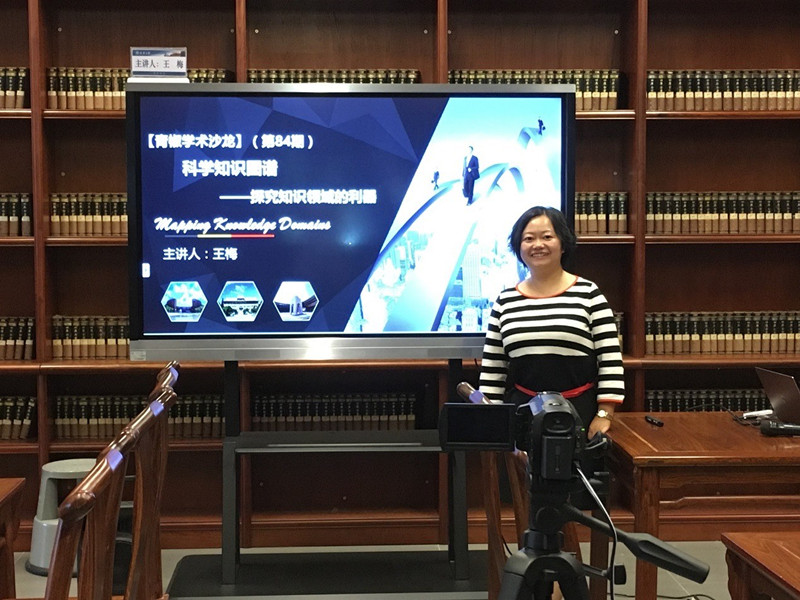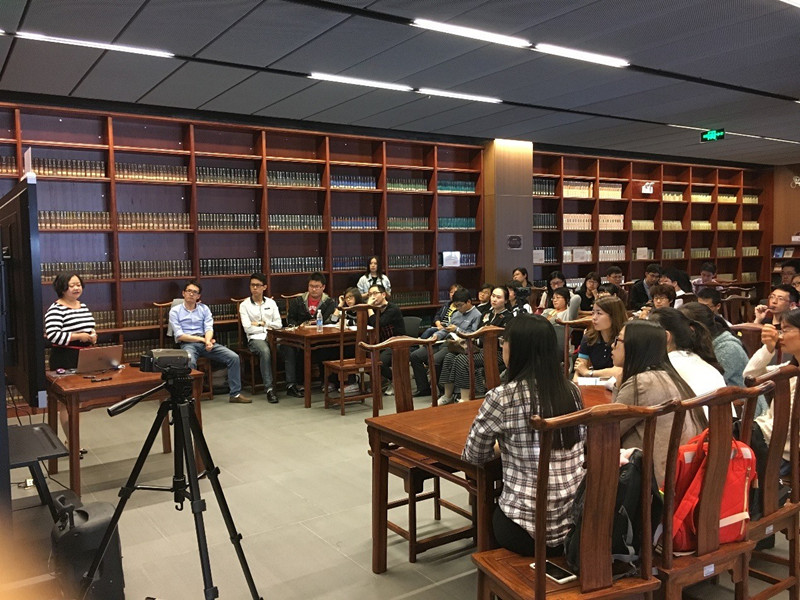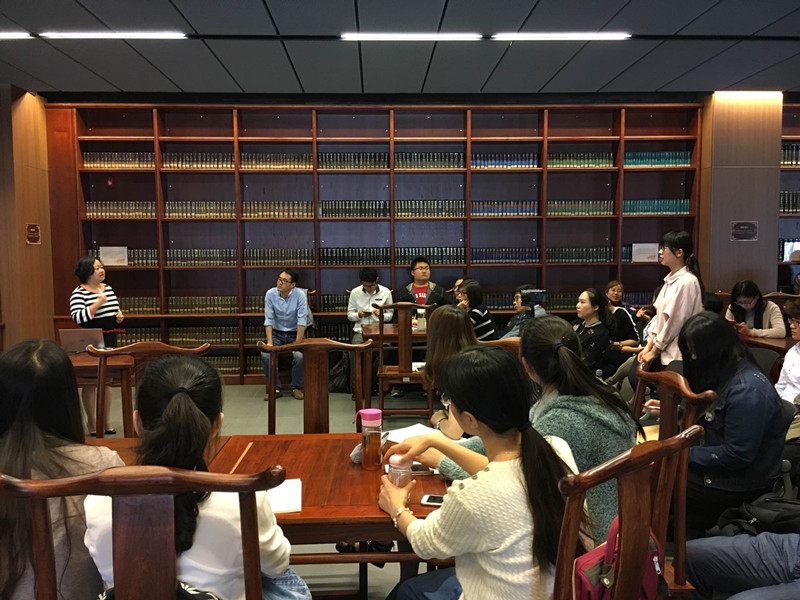Has finding valid references you and writing literature reviews ever frustrated when you prepare to write a paper? Mapping knowledge domains may provide you with a solution. Recently, Associate professor Wang Mei delivered a lecture on “Mapping Knowledge Domains - A Powerful Tool to Explore Knowledge”, when she elaborated on how to grasp the structure and evolution of certain knowledge domains by mapping knowledge domains. Associate Professor Wang received her doctor’s degree from Tianjin University in 2006. Then she worked as a visiting scholar at the University of Magdeburg in Germany for one year and engaged in postgraduate education research back at the School of Education in Tianjin University.

Associate professor Wang started her lecture with a question: Are there any problems you feel bewildered about when you are conducting scientific research? Some students pointed out that finding references, selecting topics and choosing theoretical bases confuse them. “In conclusion, you all face the challenge of grasping the structure and evolution of certain knowledge domains. In other words, you want to know what is the most effective and scientific way to know a certain knowledge domain well.” Associate Professor Wang said, “If we study topics concerning law or education, we need to read countless relevant articles. The problem is, what we are reading is just a small part of this field. As scientific knowledge keeps on changing every day, there is an urgent need to know the panorama of certain subjects, which is exactly the function of mapping knowledge domains.” Then, she introduced the contents of her lecture, which included four parts: the basic theory of mapping knowledge domains, an introduction to CiteSpace, a case study on the knowledge domain of postgraduate education research and a case study on the knowledge domain of Tianjin University organization (2011-2015).

In order to explain the theme systematically, Wang showed its definition, rationale, analysis indicator and drawing tools. Knowledge domain maps are graphs that display the development process and structural relationships of scientific knowledge. Mapping knowledge domain is a multidisciplinary field involving applied mathematics, informatics, computer science and more. Through mapping knowledge domains, human beings are capable of constructing the network of existing knowledge and further predicting its developing trends. Using different methods and techniques can draw different types of knowledge domain maps.

Wang focused on a software program, CiteSpace, which is developed by Chen Chaomei, a professor of Dalian University of Technology. Based on cociatation analysis and pathfinder network scaling, CiteSpace aims to help to discern the developmental path of scientific knowledge. She showed how to download, install and use CiteSpace and cited two examples to demonstrate its role.

To comprehend the whole situation of postgraduate education, she used CiteSpace to analyze studies of different authors, organizations, countries and regions to determine which author/organization/country/region has made greatest contribution in postgraduate education research, which provides a reference for future academic cooperation. The other is a case study on the knowledge domain of Tianjin University organization (2011-2015). Associate Professor Wang has used CiteSpace to analyze more than 10,000 articles in Web of Science written by Tianjin University teachers and students. It is demonstrable that an increasing number of articles written by them were published during those five years and chemistry, material science, and physics are the three main research fields at TJU. When doing these research projects, teachers and students are mostly financed by the National Natural Science Foundation of China and they have cooperated with scholars of other countries in studies on systems, crossed polarizers, spillovers and many more.
Finally, Wang brought five questions can be answered by mapping knowledge domains: what problems do a certain field aim to solve? What are the most remarkable achievements in this field? What are the main topics in this field? How do different research fields relate to each other? How is this field progressing at present? In conclusion, mapping knowledge domains is the best way to know the past, present and future of scientific knowledge.
After Wang finished, the audience applauded for the lecture. They also asked questions, communicated, and complimented Wang on her work.
By: Zhao Han
Editors: Qin Mian, Yin Shiyu, and Christopher Peter Clarke






